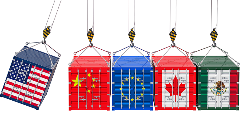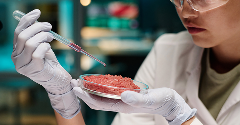News
Demands for urgent action to limit acrylamide grow
26 Jun 2024As European consumer organisation SAFE launches a campaign to legally limit acrylamide, global guidance to minimise the substance remains unenforceable.
The European Commission is considering setting maximum levels for acrylamide in certain foods. It is currently exploring these limits in processed cereal-based foods for infants and young children. Any updates will be in addition to existing regulations.

“The European Union (EU) has been at the forefront of regulating acrylamide in food,” a spokesperson for Safe Food Advocacy Europe (SAFE) told Ingredients Network. Markets, legislators and safety organisations around the globe are watching to see what happens next. “The EU’s rigorous approach and scientific assessments often serve as a model for other regions,” says SAFE’s spokesperson.
In June 2024, SAFE published a position paper emphasising the need for legally binding maximum levels of acrylamide, especially for products commonly consumed by vulnerable populations such as infants and young children. “The urgency stems from the substantial health risks associated with acrylamide, including carcinogenicity and neurotoxicity,” a SAFE spokesperson says.
Concerns for acrylamide are not going away
SAFE, a Brussels-based food safety organisation, published its position paper advocating stricter rules on acrylamide in food to limit its presence and highlight critical concerns. Acrylamide is a potentially carcinogenic substance released when food is cooked at high temperatures. The chemical compound can pose health risks, especially for young children and infants.
The European Food Safety Agency (EFSA) has verified evidence of genotoxicity, and more recent studies have found links between dietary acrylamide and specific types of cancer, SAFE says.
Calls for legally binding acrylamide levels
The EU Commission Regulation 2017/2158 set benchmark levels to reduce the presence of acrylamide in various food products. However, SAFE points out that these are not legally binding maximum levels.
European policymakers are being urged to take decisive action to safeguard public health. SAFE says the existing benchmark levels set by the European Commission have been found to be ineffective in adequately safeguarding consumers’ health.
Furthermore, SAFE is pushing for stringent regulations on acrylamide levels in baby foods, recommending a maximum level significantly lower than 50 μg/kg, as research shows that levels as low as 1 μg/kg are feasible. “We stress that higher levels could hinder efforts to minimise acrylamide content,” SAFE says.
SAFE also urges a much lower maximum level for the lead content in biscuits marketed to children than the current 150 μg/kg benchmark. Additionally, it suggests reducing the benchmark level for breakfast cereals consumed by children under three and calls for stricter regulations to safeguard this vulnerable group.
The European consumer organisation recommends adding new food categories, such as roasted nuts and vegetable chips, to acrylamide regulation as studies have consistently found high levels of acrylamide in these foods.
By 2023, CVUA Stuttgart discovered “alarmingly high” acrylamide levels, reaching up to 3500 μg/kg in vegetable chips across several food categories, including French fries, potato chips, wheat-based bread, crispbread, instant coffee, gingerbread, crackers, cornflakes, and breakfast cereals.
The consumer organisation is therefore calling for legally binding maximum levels to be established for all food categories where acrylamide poses a risk to the population, particularly children. These food categories encompass potato crisps, breakfast products, and French fries.
The global picture on acrylamide
Calls for a restriction on acrylamide are gathering pace in Europe, but how do these compare to global views on the substance and corresponding initiatives and laws?
In the US, the Food and Drug Administration (FDA) has provided guidance on reducing acrylamide in food but does not enforce specific limits. The Environmental Protection Agency (EPA) has classified acrylamide as “likely to be carcinogenic to humans”.
Similarly, in Asia-Pacific, other countries and jurisdictions, such as Japan, Australia, and New Zealand, monitor acrylamide levels but do not enforce mandatory limits. Japan supports reducing acrylamide in food, highlighting the introduction of industry methods to help prevent its formation. Various research studies investigating acrylamide have emerged in recent years to develop understanding, variations in intake across the Japanese population and the substance’s health implications.
The Australasian region’s food standards organisation says the sector is exploring new farming and processing techniques to reduce acrylamide levels. These include lowering cooking temperatures, using enzymes that decrease acrylamide formation and using raw materials with reduced sugar levels.
Countries developing their own guidelines might consider EU regulations when formulating their policies. Currently, Australia and New Zealand support Food and Drink Europe’s acrylamide toolbox and approach to reducing acrylamide formation using enzymes.
If there were to be an EU push for stricter regulations and legally binding limits on acrylamide levels, “this could set a precedent for global food safety standards”, SAFE’s spokesperson says. Progress could encourage other regions to adopt similar measures to protect their consumers from the harmful effects of acrylamide.
Recommendations for manufacturers and brands
“Manufacturers should proactively comply with any upcoming regulations by the European Commission that set legally binding maximum levels for acrylamide in food,” the spokesperson says.
Ahead of regulations coming into force, the evidence points in various directions for how the industry can contribute to addressing these risks. The spokesperson says that “revising production processes to lower acrylamide content” is one measure producers can adopt.
Reformulating recipes or implementing alternative baking and cooking methods, such as lowering baking temperatures or using different techniques, can also help reduce acrylamide formation. “Brands can also help educate consumers on how to reduce acrylamide exposure at home, such as by providing cooking tips on packaging or their websites,” says the spokesperson.
Related news

Future F&B flavours favour exploration and explosive taste profiles
25 Mar 2025
Exploration and experimentation will define the future of flavour, according to Mintel, as consumers seek out taste profiles and textures that offer an adventurous eating experience.
Read more
Partnership plans to scale cultivated meat production
21 Mar 2025
Food technology innovator Ever After Foods (EAF) and multinational food leader Bühler are striving to overcome hurdles to access and accelerate the development of cultivated meat.
Read more
Global consumers enjoy food less and perceive it as less healthy
20 Mar 2025
Enjoyment of food and its perceived healthiness is dwindling among most global populations, according to findings from Gallup and Ando Foundation/Nissin Food Products.
Read more
Seafood set to ‘dethrone’ poultry as protein growth king
19 Mar 2025
Seafood is poised to surpass poultry as the leading contributor to global protein supply growth this year, according to Rabobank’s latest protein outlook.
Read more
Tariff volatility leaves food manufacturers in limbo
11 Mar 2025
Rapid US trade policy shifts and tariff escalations are creating uncertainty for food manufacturers and ingredient suppliers.
Read more
F&B industry hit with fresh greenwashing claims
26 Feb 2025
The food and beverage (F&B) industry is under fresh scrutiny amid claims of greenwashing, with Arla the latest company in the firing line.
Read more
Protein diversification: A massive missed market?
20 Feb 2025
Germany and the UK could be missing out on the massive market for alternative meats and proteins, with one new coalition calling for an end to the “steak-tofu struggle”.
Read more
Have scientists discovered a new tool to measure UPFs?
19 Feb 2025
Researchers have developed a new scoring system and database, compiling over 50,000 food items, of which over 1,000 are classified as ultra-processed.
Read more
China ramps up cultivated meat research with new innovation base
18 Feb 2025
China has opened its first fermentation and cultivated meat research centre in Beijing.
Read more
Most consumers lack trust in AI, but supplement users are ready to embrace the technology
14 Feb 2025
A survey of UK and US consumers found that most supplement users are willing to let AI make decisions on their behalf, but they also demand greater transparency.
Read more